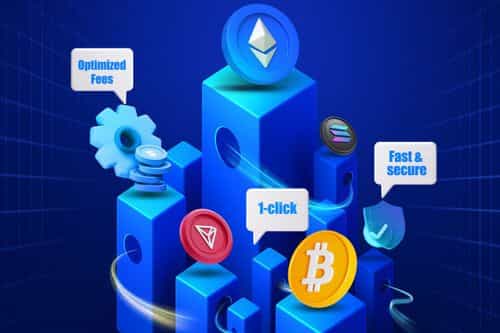The Challenges and Limitations of Automated Market Makers


In the ever-evolving world of decentralized finance (DeFi), Automated Market Makers (AMMs) have emerged as a revolutionary innovation. By eliminating the need for traditional intermediaries and enabling peer-to-peer trading, AMMs have dramatically expanded access to liquidity and financial services. However, like any transformative technology, AMMs come with their own set of challenges and limitations. Understanding these pain points is crucial for users, liquidity providers, and developers striving to enhance the future of DeFi ecosystems. In this article, we dive deep into the key challenges AMMs face, explore their inherent limitations, and discuss how the industry is working to overcome them.
Understanding AMMs and Their Importance in Decentralized Finance
Automated Market Makers (AMMs) have transformed the decentralized finance (DeFi) landscape by enabling permissionless and autonomous trading. Instead of relying on traditional order books, AMMs use smart contracts and liquidity pools to facilitate token swaps. This innovation allows anyone to become a market maker, promoting broader accessibility and inclusivity.
A deeper look into AMMs and Order Books explains the key differences in how trades are executed: AMMs use liquidity pools governed by smart contracts, while Order Books match buyers and sellers directly through active order listings.
Platforms like Uniswap, Curve, and SushiSwap have popularized AMMs, offering users a seamless way to trade crypto assets. AMMs have also driven massive liquidity into DeFi ecosystems, fostering growth and innovation across blockchains. However, while they offer clear benefits, they also come with notable challenges and limitations.
Key Challenges Faced by Automated Market Makers
Despite their advantages, AMMs encounter significant technical and economic obstacles that impact both traders and liquidity providers. Traders often face issues like slippage and front-running, especially during high-volatility periods or when dealing with low-liquidity pools. On the other hand, liquidity providers are exposed to risks such as impermanent loss, smart contract vulnerabilities, and fluctuating returns due to market volatility. Furthermore, the lack of centralized oversight can lead to systemic inefficiencies, making it difficult to ensure fair pricing and sustainable yield strategies.

Impermanent Loss and Its Impact on Liquidity Providers
One of the most talked-about risks in AMMs is impermanent loss. This occurs when the overall value of assets in a liquidity pool diverges compared to holding an asset individually. For example, if a liquidity provider adds ETH and USDC to a pool, and the price of ETH rises significantly, the provider may earn less than simply holding ETH outright. Impermanent loss can deter participation, especially in volatile markets. Although some platforms offer incentive rewards to offset this risk, it remains a fundamental challenge in AMM design.
Slippage and Its Effect on Trading Efficiency
Another critical issue is slippage, the difference between the expected price of a trade and the price at which the trade is executed. Slippage worsens with larger transactions or lower liquidity pools, leading to a less efficient trading experience. Traders seeking to move significant amounts may face unfavourable prices, making AMMs less attractive for high-volume participants.
Limitations of AMMs in Terms of Liquidity and Trading Volume
While AMMs have democratized access to liquidity provision, they still struggle with deep liquidity and high trading volume, especially in niche or newer markets. This limitation can lead to significant price slippage and inefficient trade execution for users attempting larger transactions. Additionally, in low-volume pools, price discovery becomes less reliable, and arbitrageurs may dominate trading activity rather than genuine user demand. Without consistent participation from liquidity providers and active traders, the capital efficiency of AMMs remains inferior compared to traditional order book models.
Liquidity Fragmentation in Low-Volume Markets
In DeFi, liquidity is often fragmented across various AMMs and blockchain networks. This fragmentation leads to inefficient capital allocation and worsens slippage for traders. Smaller liquidity pools on less popular platforms may suffer from thin markets, making it difficult for users to execute trades without significantly impacting prices.
The Issue of Price Manipulation in Some AMMs
AMMs are also susceptible to price manipulation. Since asset pricing is determined by the pool's balance rather than external market feeds, attackers can exploit small pools by executing large trades that significantly shift prices. This manipulation can trigger arbitrage opportunities that harm regular users and liquidity providers. Although some AMMs have introduced oracle-based pricing mechanisms or other anti-manipulation measures, not all protocols have robust defences in place.
Regulatory Uncertainty and Its Impact on AMMs
Regulatory uncertainty presents a critical challenge for the sustainable growth of Automated Market Makers (AMMs). The decentralized architecture of these platforms often clashes with traditional regulatory frameworks, which are designed for centralized financial institutions. Inconsistent laws across jurisdictions create ambiguity around compliance, taxation, and user protection. This not only deters institutional participation but also exposes developers and users to unexpected legal and financial risks. Moreover, evolving regulations, such as mandates for Know Your Customer (KYC) or Anti-Money Laundering (AML) compliance, may undermine the core principles of decentralization and anonymity that define AMMs. Navigating this shifting landscape requires ongoing legal adaptation, which many decentralized teams are ill-equipped to handle.
The Future of AMMs: Overcoming Current Challenges
The future of AMMs looks promising, as developers innovate to address current limitations. New models such as concentrated liquidity (e.g., Uniswap v3) aim to reduce impermanent loss and significantly improve capital efficiency by allowing liquidity providers to allocate funds within specific price ranges. At the same time, hybrid protocols that combine the benefits of traditional order books and AMMs are gaining traction, offering users greater price accuracy and reduced slippage.
Further advancements in cross-chain liquidity aggregation and adaptive fee mechanisms are also showing great potential, paving the way for more resilient, scalable, and efficient DeFi ecosystems. These developments are critical to attracting institutional participation and supporting sustainable growth in decentralized finance.
In parallel, educational initiatives, such as Rango Exchange’s Learn Center, are playing a vital role in onboarding new users, reducing risk exposure, and building a more informed DeFi community. As innovation continues, the evolution of AMMs will likely hinge on balancing user experience, risk management, and interoperability across blockchain networks.
Conclusion
Automated Market Makers have revolutionized the DeFi ecosystem by enabling permissionless, continuous, and decentralized trading. Yet, their growth is not without obstacles. Technical challenges such as impermanent loss, slippage, and liquidity fragmentation continue to demand innovation, while the rising tide of regulatory uncertainty introduces new layers of complexity. Inconsistent global policies, compliance burdens, and the tension between decentralization and regulation threaten to stifle the very openness that defines AMMs. Despite these hurdles, ongoing advancements in liquidity design, governance frameworks, and legal strategy are helping the ecosystem mature. As DeFi moves forward, striking a balance between innovation, usability, and regulatory alignment will be crucial to sustaining trust and long-term adoption.
Frequently asked questions
Check out most commonly asked questions, addressed based on community needs. Can't find what you are looking for?
Contact us, our friendly support helps!
What is impermanent loss, and how can liquidity providers manage it?
Impermanent loss occurs when the value of pooled assets changes compared to simply holding them. Providers can manage it by choosing stablecoin pools, utilizing platforms offering IL protection, or participating in concentrated liquidity AMMs.
Why is slippage worse on AMMs compared to traditional exchanges?
Slippage is more pronounced on AMMs because trades directly impact the liquidity pool’s balance, unlike centralized exchanges that use deeper order books to absorb larger trades without significant price impact.
How are projects addressing liquidity fragmentation in DeFi?
Solutions like cross-chain aggregators (e.g., Rango Exchange) aim to connect fragmented liquidity across different AMMs and blockchains, offering users better pricing and deeper liquidity options.




